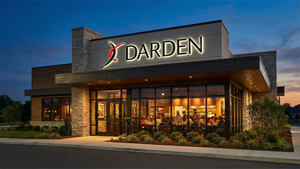
Copenhagen, Denmark – Pharmaceutical giant Novo Nordisk (NYSE: NVO) has reported a robust second quarter for 2025, with impressive revenue and net income figures largely propelled by the formidable strength of its diabetes and obesity care segments. The company's flagship weight-loss drug, Wegovy, and the diabetes treatment Ozempic continued their meteoric rise, underscoring the immense global demand for GLP-1 (glucagon-like peptide-1) agonists. However, this success was tempered by a revised, lower full-year sales and profit outlook, casting a shadow of caution over an otherwise stellar earnings report.
The dual narrative of exceptional current performance juxtaposed with a more conservative future projection reflects the evolving dynamics of the lucrative GLP-1 market. While Novo Nordisk remains a dominant player, intensified competition, particularly from Eli Lilly (NYSE: LLY) and the emergence of compounded alternatives, is forcing the company to recalibrate its expectations and strategize for a rapidly changing landscape.
The GLP-1 Juggernaut Continues, But Headwinds Emerge
Novo Nordisk's second-quarter 2025 financial results painted a picture of extraordinary growth in specific segments. The company reported an impressive revenue of DKK 76.857 billion, marking a substantial 13% year-over-year increase (18% at Constant Exchange Rates, CER). Net income soared by 32% to DKK 26.503 billion, while operating profit grew by 29% (25% reported) to DKK 33.449 billion, demonstrating a healthy operating margin of 43.5%. Diluted earnings per share (EPS) climbed to DKK 5.96, surpassing analyst expectations.
The undisputed star of the earnings call was the obesity care segment, which saw its revenue surge to DKK 20.372 billion in Q2 2025, a remarkable 53% increase from the previous year. Wegovy, in particular, experienced a staggering 67% year-over-year sales increase, with international sales skyrocketing by 320% to DKK 12 billion ($1.87 billion) in the quarter alone. Ozempic, while primarily a diabetes drug, also continued its strong momentum, contributing significantly to the company's overall performance. For the first half of 2025, Wegovy sales reached DKK 36.888 billion, while Ozempic generated DKK 64.5 billion. This robust uptake confirms the immense global demand for effective obesity and diabetes management solutions, solidifying Novo Nordisk's leadership in this rapidly expanding therapeutic area.
Despite these impressive figures, Novo Nordisk revised its full-year sales growth guidance downwards to 8-14% at CER, from a previous 13-21%. Operating profit growth was similarly adjusted to 10-16% at CER, down from 16-24%. This recalibration primarily stems from heightened competitive pressures in the U.S. GLP-1 market. The company explicitly cited the impact of unregulated compounded GLP-1 alternatives and the rapid ascent of Eli Lilly's Zepbound/Mounjaro as significant factors. Lower-than-expected growth for Wegovy in the U.S. obesity market and for Ozempic in the U.S. GLP-1 diabetes market in the second half of 2025 also contributed to the lowered outlook. Furthermore, Novo Nordisk anticipates a mid-single-digit negative impact on operating profit growth due to the strategic acquisition of three Catalent (NYSE: CTLT) manufacturing sites, a move designed to bolster its long-term production capacity but incurring short-term costs. The depreciation of the USD/DKK exchange rate is also expected to temper reported sales and operating profit growth.
The immediate market reaction was cautious, with Novo Nordisk's shares experiencing declines leading up to and following the Q2 report. The stock had already seen a significant year-to-date decline by early August 2025, and following the lowered guidance, it slid another 1.72% on September 8, 2025. While some analysts viewed this as an overreaction, creating a potential "buying opportunity," the dip reflected investor concerns about the sustainability of Novo Nordisk's growth trajectory in an increasingly competitive environment. Adding to the strategic shifts, the company announced a significant restructuring plan in Q3 2025, including a reduction of approximately 9,000 employees globally to generate around $1.25 billion in annualized savings through 2026, with DKK 9 billion in one-off costs. This further adjusted the full-year operating profit growth guidance to a range of 4-10% at constant currencies, with savings redirected to future growth opportunities.
The Shifting Sands of the Obesity Market: Eli Lilly Gains Ground, Manufacturing Becomes Key
The intensely competitive GLP-1 market is experiencing a significant shake-up, and Novo Nordisk's (NYSE: NVO) Q2 2025 report serves as a clear indicator of the shifting landscape. While Novo Nordisk continues to reap substantial rewards from its obesity and diabetes portfolio, particularly Wegovy and Ozempic, its primary rival, Eli Lilly (NYSE: LLY), is rapidly gaining ground, emerging as a major winner in this high-stakes arena.
Eli Lilly (NYSE: LLY) stands out as the most significant beneficiary of the current market dynamics. With its tirzepatide-based drugs, Mounjaro (for diabetes) and Zepbound (for weight management), Eli Lilly has demonstrated superior efficacy in weight loss, achieving up to 22.5% weight reduction over 72 weeks compared to semaglutide's 17-18% over 68 weeks. This competitive edge has allowed Lilly to aggressively capture market share in the U.S. In Q2 2025, Lilly's U.S. GLP-1 market share increased to 57% from 53% in Q1, directly challenging Novo Nordisk's long-held dominance. Eli Lilly reported a robust 38% revenue growth in Q2 2025 and subsequently raised its full-year 2025 guidance, largely on the back of soaring demand for its GLP-1 products. Mounjaro and Zepbound collectively generated significantly more sales than Novo Nordisk's GLP-1s in the first half of 2025, reaching a combined $14.734 billion versus Novo Nordisk's $7.831 billion, highlighting Lilly's formidable momentum. Lilly has capitalized on Novo Nordisk's past supply chain issues by scaling up its own production, turning product availability into a strategic advantage that fuels increased prescriptions and market trust. The company's pipeline also includes promising oral GLP-1 therapies like orforglipron, projected for a 2026 launch, which could further disrupt the market.
For Novo Nordisk (NYSE: NVO) itself, the situation presents a mixed bag. While current sales remain exceptionally strong, the revised full-year outlook signifies that the era of unchallenged, exponential growth may be tempering. The company is investing heavily in manufacturing capacity and streamlining operations through significant restructuring and global job cuts to protect its market share and redirect resources towards R&D and commercial execution. This proactive stance, while incurring short-term costs, is crucial for its long-term viability in a market where maintaining supply and innovation are paramount.
The role of manufacturing and supply chain management has also come into sharp focus. Catalent (NYSE: CTLT), a leading contract development and manufacturing organization (CDMO), finds itself at the center of a strategic maneuver. Novo Holdings, Novo Nordisk's parent company, acquired Catalent for $16.5 billion, and subsequently, Novo Nordisk directly purchased three critical Catalent fill-finish manufacturing sites for $11 billion. These sites, located in Anagni, Italy; Brussels, Belgium; and Bloomington, Indiana, are vital for the sterile filling of GLP-1 drugs. For Novo Nordisk, this vertical integration is a strategic win, providing greater control over its production processes, alleviating bottlenecks, and promising increased filling capacity from 2026 onwards, particularly for Wegovy. This move signals a profound commitment to securing its supply chain and meeting the unprecedented demand.
Conversely, for the remaining Catalent (NYSE: CTLT) operations, while it continues as a diversified CDMO under Novo Holdings, the sale of these key sites means relinquishing substantial capacity previously dedicated to Novo Nordisk's GLP-1 products. This transaction raised concerns among other pharmaceutical clients, including Eli Lilly, about potential implications for their existing contracts and future access to specialized manufacturing capacity. The event underscores a broader industry trend where the success of blockbuster drug classes is driving significant M&A activity in manufacturing infrastructure, as pharmaceutical companies prioritize securing their supply chains amidst soaring demand and global competition. The intense competition also puts pressure on smaller pharmaceutical companies attempting to enter the GLP-1 space, as the established giants like Novo Nordisk and Eli Lilly consolidate their positions and manufacturing capabilities.
The Broad Ripples of a GLP-1 Revolution: Industry Shifts and Regulatory Watch
The intense competition unfolding in the GLP-1 market, particularly between Novo Nordisk (NYSE: NVO) and Eli Lilly (NYSE: LLY), is not merely a corporate rivalry; it's a seismic event sending ripple effects across the broader pharmaceutical industry, healthcare systems, and even consumer markets. This burgeoning class of drugs is driving significant trends in M&A, sparking heated debates over drug pricing and patient access, and prompting a reevaluation of regulatory frameworks.
This phenomenon fits squarely into broader pharmaceutical industry trends, most notably the strategic importance of manufacturing and supply chain control. The unprecedented demand for GLP-1s has exposed vulnerabilities in existing production capacities, especially for sterile fill-finish services. Novo Nordisk's $16.5 billion acquisition of Catalent (NYSE: CTLT) in 2024, designed to scale its U.S. production footprint, is a stark illustration of this trend. CDMOs are either expanding aggressively or becoming prime acquisition targets, as pharmaceutical giants race to secure the means to produce these blockbuster drugs. This vertical integration trend underscores that in an era of high-demand therapeutics, having robust in-house or dedicated manufacturing capabilities is as critical as innovative R&D.
The ripple effects extend widely. For direct competitors, pharmaceutical companies without a strong GLP-1 pipeline are facing immense pressure to acquire assets or fast-track their own metabolic health programs to avoid being left behind in a market projected to reach $75 billion to $140 billion by 2030. Indirect competitors are also feeling the impact; for instance, bariatric surgery volumes are predicted to decline by 22% by 2029 as patients opt for less invasive pharmacological interventions. There's also a potential long-term reduction in demand for drugs and devices treating comorbidities like cardiovascular and kidney diseases, should GLP-1s significantly reduce their incidence.
The healthcare system is grappling with the profound implications of GLP-1s. While these drugs offer significant long-term health benefits by addressing chronic conditions, their high list prices (often exceeding $1,000 per month in the U.S.) are a major concern for affordability and patient access. This has fueled a contentious debate on drug pricing, leading to increased overall healthcare spending in the short term, even if individual patient costs remain flat due to rebates. Many commercial insurers and government programs like Medicare/Medicaid still limit or exclude coverage for weight loss, creating significant barriers to access and contributing to high discontinuation rates. The widespread adoption of GLP-1s is fundamentally reshaping how healthcare providers approach obesity care, shifting focus from managing symptoms to potentially treating the root cause.
Regulatory and policy implications are also evolving rapidly, particularly concerning compounded GLP-1 alternatives. During initial supply shortages of FDA-approved drugs, compounded versions, mixed by pharmacies, filled a crucial gap, offering a lower-cost alternative. However, these compounded drugs are not FDA-approved and bypass rigorous review for safety, effectiveness, or quality, leading to concerns about inconsistent dosing, unapproved ingredients, and counterfeit products. As supply chain issues for approved GLP-1s resolve, the FDA has moved to ban compounded versions, deeming them "essentially a copy" of commercially available, approved drugs. While this aims to enhance patient safety and product quality, it raises new questions about continued patient access, especially for those who relied on these more affordable options.
Historically, periods of rapid innovation in pharmaceuticals, such as the development of insulin in the 1920s or penicillin post-WWII, have always been characterized by intense R&D, fierce competition, supply chain challenges, and societal debates over access and pricing. The GLP-1 revolution is a contemporary echo of these historical precedents, demonstrating how a transformative drug class can swiftly redraw the scientific, economic, and policy landscapes within and beyond the pharmaceutical industry.
The Road Ahead: Navigating Growth, Competition, and Policy
The GLP-1 market is far from reaching its zenith, presenting a dynamic landscape of both immense opportunity and significant challenge for Novo Nordisk (NYSE: NVO) and its competitors. Projections for this market are staggering, with some analysts forecasting it to reach $100 billion by 2030, and potentially half a trillion dollars worldwide by 2032, if new indications and patient populations are successfully tapped.
In the short term, Novo Nordisk faces the immediate task of stabilizing its market share against Eli Lilly's (NYSE: LLY) aggressive inroads and the lingering impact of compounded GLP-1 alternatives. The company's strategic pivots, such as the NovoCare Pharmacy initiative which reduced Wegovy's price to $499/month, are direct responses to these pressures, aiming to improve affordability and access. Legal actions against unauthorized compounded drug producers are also part of this defensive strategy to protect revenue streams and intellectual property. Novo Nordisk's ongoing restructuring, including job cuts, is designed to generate savings that will be reinvested into R&D and commercial execution to sharpen its competitive edge.
The long-term outlook for Novo Nordisk remains compelling, underpinned by a robust pipeline and substantial strategic investments. The company is aggressively expanding its manufacturing capacity, notably through the acquisition of Catalent (NYSE: CTLT) sites and a $16.5 billion expansion plan, with the ambitious goal of producing 100 million Wegovy doses annually by 2026. This focus on supply chain resilience is critical. Novo Nordisk's R&D efforts are concentrated on next-generation therapies like CagriSema (a dual GLP-1/amylin agonist in Phase III) and Amycretin (a potential diabetes therapy and unimolecular GLP-1 and amylin agonist), which promise enhanced efficacy and broader metabolic benefits. Geographic expansion into emerging markets, where the prevalence of diabetes and obesity is rising, also represents a significant avenue for future growth.
The entire pharmaceutical industry is bracing for further strategic pivots. A major emerging opportunity lies in oral GLP-1s, which are seen as the "next frontier" due to strong patient preference for pills over injections. Novo Nordisk submitted an application for oral Wegovy in February 2025, while Eli Lilly's orforglipron is expected in 2026. The oral GLP-1 market alone is projected to reach $30 billion by 2030, and a first-mover advantage with a superior oral product could significantly reshape market leadership. Beyond this, combination therapies (e.g., dual and tri-agonists) and the pursuit of broader indications will unlock massive new markets. GLP-1s are being investigated for cardiovascular disease (CVD), chronic kidney disease (CKD), metabolic dysfunction-associated steatohepatitis (MASH), sleep apnea, Alzheimer's disease, and polycystic ovary syndrome (PCOS). Successful trials and regulatory approvals in these areas, particularly for MASH, could open up multi-billion dollar opportunities and fundamentally change how these conditions are treated.
However, significant challenges persist. Drug pricing remains a contentious issue, exerting continuous pressure from policymakers and the public to lower costs. Patient access is still hampered by inconsistent insurance coverage, particularly for obesity, and high discontinuation rates linked to both cost and side effects. Regulatory shifts, such as the FDA's crackdown on compounded GLP-1s, underscore the dynamic and often unpredictable nature of the market environment. Pharmaceutical companies will need to balance innovation with affordability, navigating a complex web of regulatory, market, and public expectations.
Conclusion: A New Era of Metabolic Health
Novo Nordisk's Q2 2025 earnings report stands as a compelling testament to the transformative power of GLP-1 agonists, simultaneously highlighting the immense commercial success of drugs like Wegovy and Ozempic, and the rapidly intensifying competitive pressures that are reshaping the pharmaceutical landscape. The core takeaway is a market in flux: while demand for effective obesity and diabetes treatments continues to surge, the era of single-player dominance is yielding to a vigorous rivalry, primarily with Eli Lilly, and a renewed focus on manufacturing might and pipeline innovation.
Moving forward, the market will be defined by several key factors. Investors and stakeholders should closely watch clinical trial readouts, especially for oral GLP-1s and combination therapies, as these will be critical catalysts for market shifts and new indications. Regulatory decisions, particularly concerning drug approvals, expanded indications, and policies on drug pricing and compounding, will profoundly influence market access and competitive dynamics. Changes in insurance coverage policies for obesity and other new indications will directly impact patient access and the overall market size, making payer engagement a strategic imperative.
Crucially, manufacturing capacity and supply chain resilience will remain paramount. The ability of companies like Novo Nordisk to consistently meet surging demand, prevent shortages, and efficiently distribute their products will be a decisive factor in securing market share. Finally, the evolution of pricing strategies and affordability initiatives, coupled with improvements in real-world adherence data, will determine the long-term sustainability and societal impact of these groundbreaking drugs.
In essence, the GLP-1 revolution is ushering in a new era of metabolic health, but it's an era marked by intense innovation, fierce competition, and a critical reckoning with accessibility and affordability. For Novo Nordisk, the path ahead involves not just continued scientific leadership but also strategic agility to navigate a crowded field, optimize its supply chain, and address the broader societal implications of its blockbuster treatments. The coming months will undoubtedly reveal how successfully the company adapts to these multifaceted challenges, setting the tone for the future of chronic disease management.






